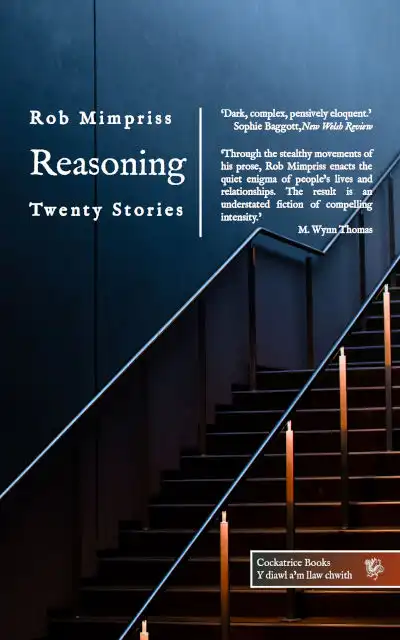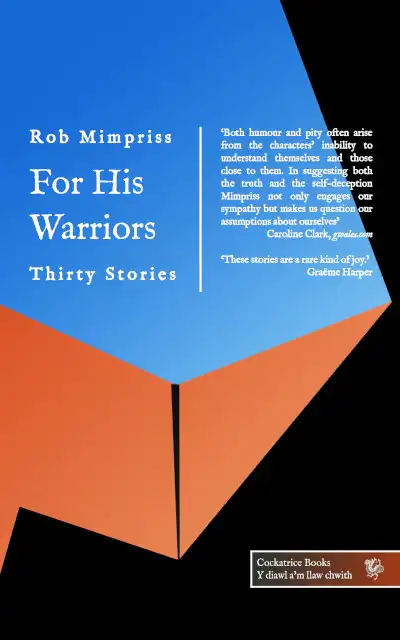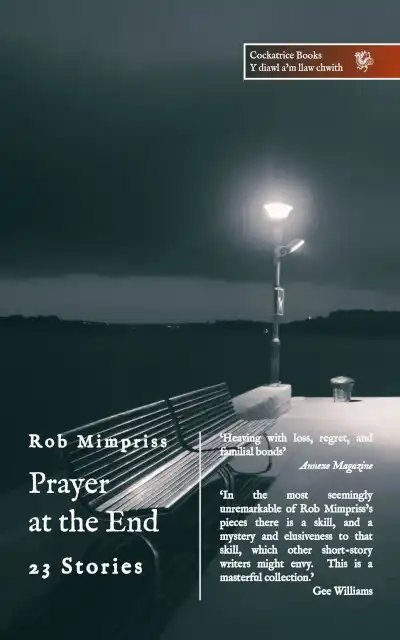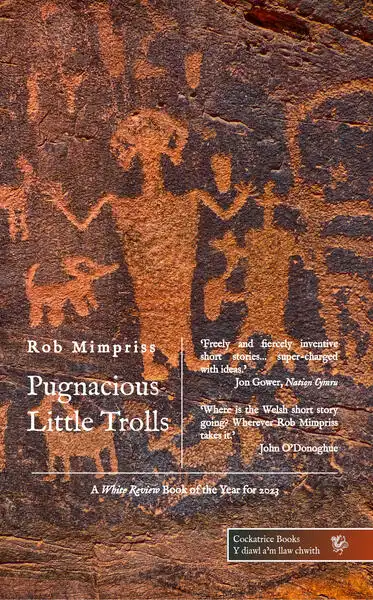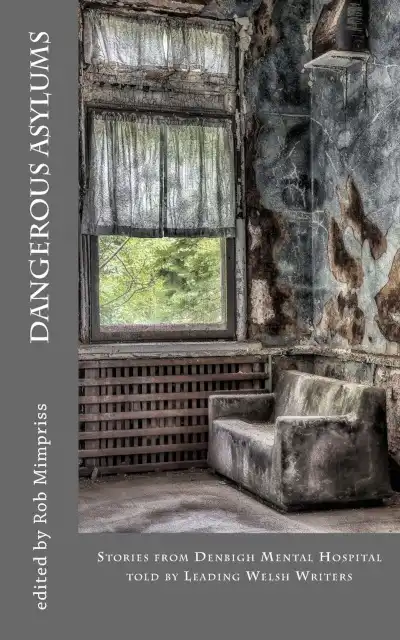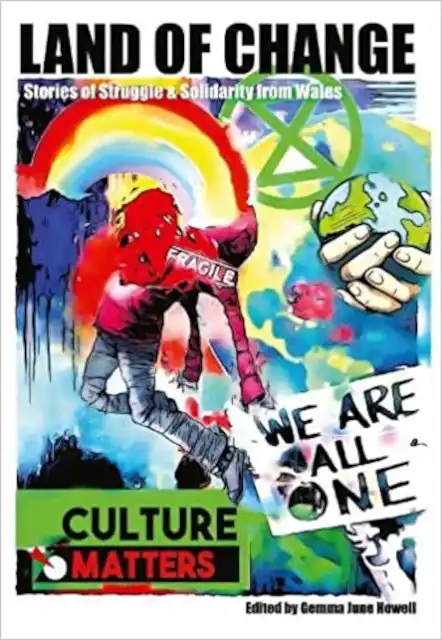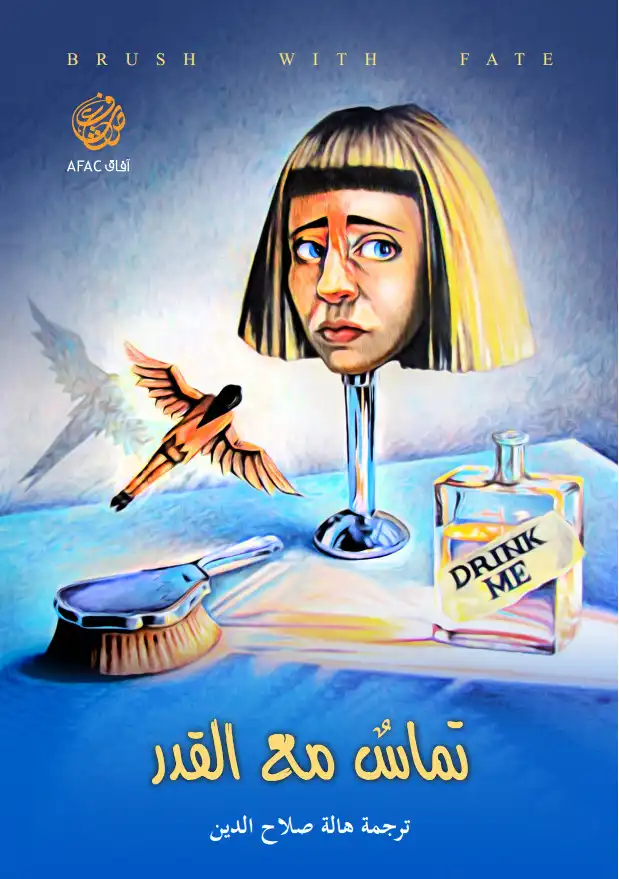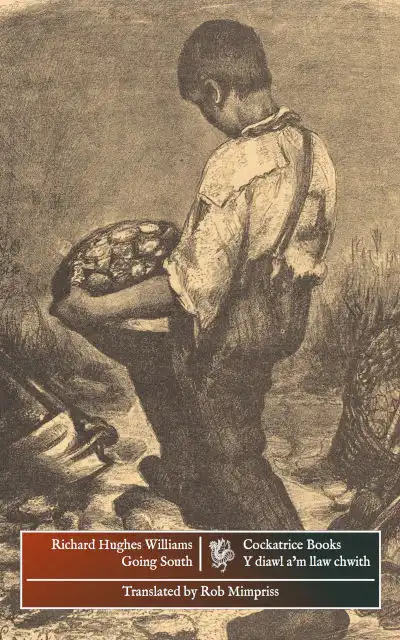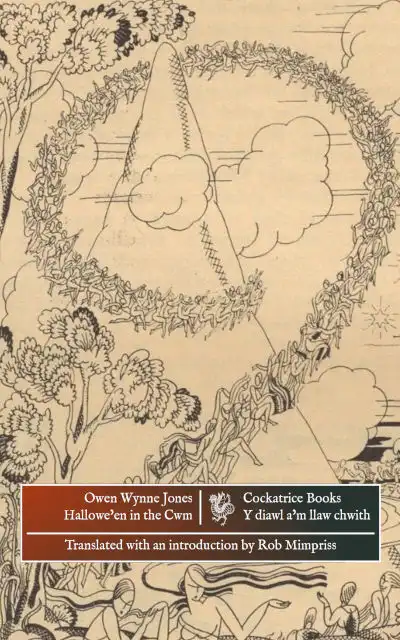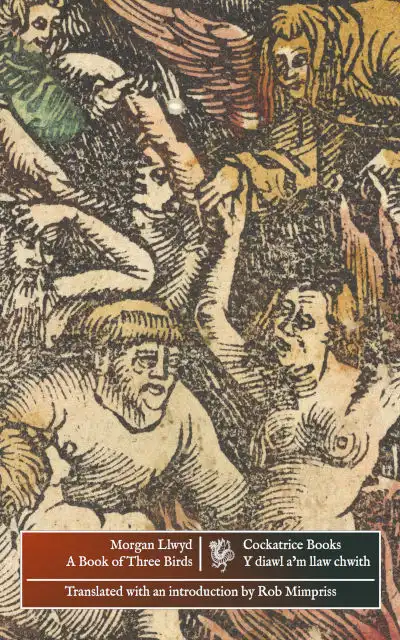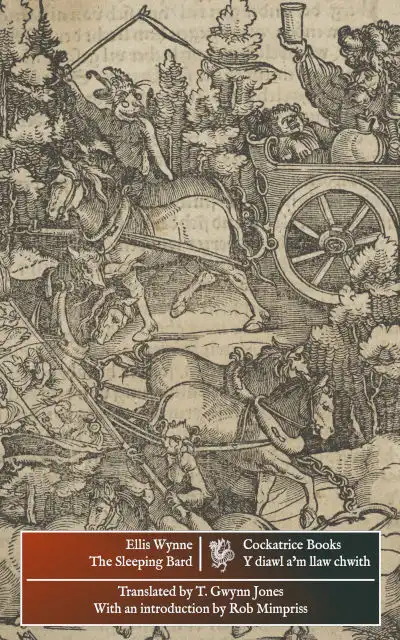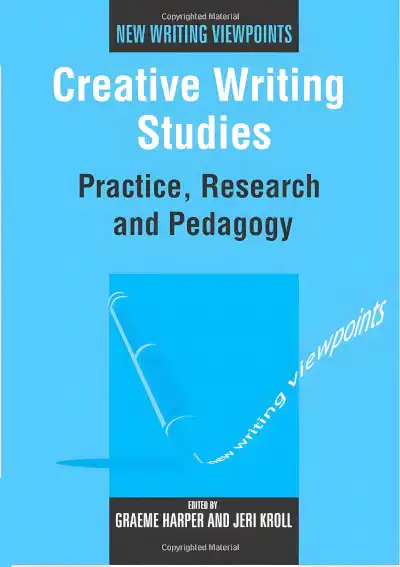The following essay is adapted from my thesis in Creative and Critical Writing, for which I was awarded a doctorate by Portsmouth University in 2005.
Among critics and apologists of the short story, it is common to divide the tradition in a number of ways. Walter Allen draws a sharp distinction between the English and American short story, and also finds a ‘fundamental difference’ (between the modern short story in Europe and the oral tradition that preceded it.
The first distinction enables him to clarify the short story’s origins, the second to comment on its nature. The story became a dominant form in America, he says, precisely because writing novels was impossible: faced with ‘the thinness of American life, its lack of a rich and complex social texture’ (quoting Walton Litz), writers turned to the exploits of the pioneers or of other isolated heroes, and the loneliness and intensity of their experiences were ideal for expression in the short story form. In Europe, similarly, the story differs from the traditional tale in its attention to ‘a single moment in time,’ ‘a single incident,’ ‘a single perception’ epitomised by Joyce’s concept of the epiphany explained in his fragment Stephen Hero, and once again concentrating on the single individual. Since this broader emphasis on isolation is the same, the smaller success of the form in Europe is explained by the richness of the novelistic tradition.
But if Walter Allen provides us with satisfactory definitions and origins for the short story, it is harder to use his thesis to predict the form’s prosperity in future. In America the increasing maturity and complexity of society will drive writers to the novel in their attempts to encompass it, and the short story must become more novelistic if it is to survive, even temporarily. By this argument the development of a Maxwell or a Cheever, the triumph of content over the strictures of form, indicate not the increasing robustness of the form but its encroaching obsolescence, while the recent success of Raymond Carver and his followers is atavism, not progress. In Europe the progressive crowding of society, and the ubiquity of a communications culture and an entertainment culture which discourage people from spending time with their thoughts, assault the particular consciousness which makes epiphany possible. Where the short story is not a matter of national pride, where it is not protected, as Andrew Levy points out, by the needs of the creative writing workshop, it must do its best to adapt to these changes, perhaps mount some protest against them.
His argument forces Allen into a pessimistic stance, but he finds in the form a tenacity which logic cannot entirely explain: perhaps because telling stories is fundamental to our nature, perhaps because of the peculiar challenges and opportunities it offers to the writer. But even within his historical approach, one finds strong hints that the form will survive: partly because social progress is not continuous and inevitable, partly because when it does occur, it often creates new forms of isolation. Such isolation is explored by Kate Pullinger and Lorrie Moore: limited in their relationships largely to members of their own generation, in liaisons as fleeting as the short story itself, their characters form a disparate society which no longer needs to describe itself in novelistic form. In seeking hope for the short story’s future, this essay concentrates on its practice in Europe – in the work of the Welsh writer, Kate Roberts.
When describing the effect of early American life on the development of the short story, Walter Allen refers to European writers to make his point clear. In the stories of Chekhov, Maupassant, Kipling and others, he says, we feel ‘behind each one of them the pressure and presence of a whole society, dense, crowded, complex,’ and this pressure is felt even when the story focuses on a single individual. Perhaps this comment offers hope for the form’s survival of which he himself is unaware, but initially it articulates the problems we face in categorising Kate Roberts’s work. For on the one hand, she is the product of industrial revolution, and the poverty and upheaval that go with it; on the other, she enjoyed the cultural heritage of the chapel and the Welsh language: in fact, she tells Saunders Lewis in interview, her parents were monoglot Welsh-speakers, with all the richness of the Llŷn and Eifionydd dialects on their lips. Is her resort to the short story form therefore an expression of ‘the thinness of Welsh life, its lack of a rich and complex social texture,’ or is it the outworking of some personal vision which only the short story could have expressed?
Critics arguing the former case would have uncertain evidence on their side. In her interview she emphasises the recent birth of her community, its lack of an ancient story-telling tradition, and the absence of any emphasis of literature in her education. In addition, she complains of the poverty of her experiences, which leaves her as an observer of others’ lives when she would like to be leading her own (p20). She blames her lack of productivity as a novelist both on laziness and on lack of time, and she has her busyness as an editor and housewife to contend with, correcting the proofs and making the jam even on the day she was due in Swansea to receive her honorary doctorate. Her impulsion to write is the same as that which drove her to the nationalist party: the death of her brother in the First World War; the injustices perpetrated by the British government, who took the children from their monoglot Welsh parents to be killed, and then sent the telegrams home in English; the courageous struggle of her people against poverty. She finds her inspiration in the epiphanic experience, in flashes of light which leave new perspectives on a character, a society or life itself.
One might conclude from this that a visionary consciousness led Kate Roberts to the short story, and that circumstance prevented her from producing novels. But in fact, in both phases of her writing career, she produced novels and collections of stories in roughly equal numbers, and if we judge her intention as visionary we are faced with the oddly muted nature of her epiphanies. They can seem neither integral to the story as a whole, nor capable of moving beyond it: not always well-designed as narrative features, they can seem to lack visionary intensity.
The type of epiphany I find largely absent in her work is clearly present in James Joyce’s Dubliners. In ‘A Painful Case’ Mr James Duffy, a misanthropic and fastidious man, is jogged out of his emotional self-alienation by the violent death of a woman he once cared for. In ‘The Dead’ Gabriel Conroy is shocked out of his complacency when his wife tells him the story of Michael Furey, a young man who died for her love.
By Kate Roberts’s definition these are flashes of light which cast a new insight on character and experience. But it should also be noted that they arise very naturally from the moral progress of the central character and from the shape of the narrative itself. The structure of ‘A Painful Case’ is ironic, since James Duffy’s final access of loneliness is a realisation of the state he was in from the beginning, while the progressive slowing down of the narrative pace, from summary through occasional use of scene, prepares us for the leisurely description of the final moment. In ‘The Dead’ Gabriel Conroy is made ready to encounter his wife’s rural past by his meeting with Miss Ivors, by Mr D’Arcy’s singing of ‘The Lass of Aughrim,’ and by his walk home through the snow.
If these epiphanies form the climax to Joyce’s moral education of his characters, they also suggest the numinous and the ecstatic as described by William James. But in the selection of her work translated by Joseph Clancy, Kate Roberts’s epiphanies seem rather to exist in a state of contrast with her stories. In ‘Red-Letter Day,’ an unemployed South Wales miner and his daughter, Rachel Annie, are sent a gift of ten shillings: large enough to secure the envy of their neighbours, but too small to be of significant use. They agree to split the money and take a day of pleasure, and Rachel travels down on the train to Cardiff, where she does a little shopping and eats lunch at a café before going home happy. But she finds her father despairing and angry, and goes to bed where she hears ‘again – the clang-clang of the trams.’
It is a memorable and a moving ending, as powerful as Nora’s banging of the door in A Doll’s House, but it is hard to relate to the ‘flash of light’ that Kate Roberts describes to Saunders Lewis. For outside its obvious association with the train that took Rachel to Cardiff it has no narrative significance; emotionally neutral itself, it acquires whatever mood we find in the rest of the story – it may even be reassuring to Rachel if she hears that sound every night, and since we are told that the valley looks pretty in the darkness.
Another of the stories, ‘The Quilt,’ works in a similar way. Ffebi Wiliams, the wife of a bankrupt businessman, wakes up on the day her furniture is to be taken and sold, and decides to rescue a certain quilt she bought after the beginning of their financial hardship, whose possession has given her more pleasure than any of the necessities they have chosen to keep. She takes the quilt and wraps it around herself just as the removal men arrive:
At this moment the door was opened by one of the furniture movers, a young boy. When he saw Ffebi Wiliams in bed this way, he quickly went back out.
After a few moments she heard laughter coming from the far end of the landing.
In neither story does the ending solve any mystery; neither does it cast any light. It seems, rather, a way of deepening our mode of enquiry, of forcing us to question the significance of the character’s experience to ourselves. Or perhaps it seeks less to perpetuate the story (by slowing the narrative down, so causing the act of reading to merge with the act of meditation) than to shock us with its finishing. Furthermore, in possessing endings with pronounced identities of their own, which force us to question the reading experience in some way, these stories belong more to the early part of Kate Roberts’s career than to the later. ‘Two Old Men,’ ‘The Treasure,’ ‘Family,’ and ‘Hope’ end with no such literary crisis: a section of experience is completed and the character moves on, but the ending merges unobtrusively with the story as a whole.
It seems that the epiphanic ending came to seem to Kate Roberts like an example of the artifice she mistrusted: she rejected the Joycean ending as she had earlier rejected the surprise endings of O. Henry or Dic Tryfan. It is strange, if she was primarily a visionary artist, that she should have abandoned such a powerful device for the presentation of vision; but there may be another way of understanding her stories: a way that relates them to her artistic output as a whole, and that leads us back to Walter Allen’s questions about the future of the short story.
In her interview with Saunders Lewis, Kate Roberts defines her fictional milieu as ‘an impoverished community at an impoverished time in its history.’ Because of this ‘fight against poverty’ she ignores sexual and personal conflicts; but her characters never reach ‘the depths of poverty’ which they ‘fight against’ and ‘fear.’ This is where she parts company with Hughes Williams, since her characters do have money to spend, and are willing to spend it on good cloth and glass plates, the fashionable acquisitions of her day. Ffani Rolant in ‘The Last Payment,’ fingering a piece of cloth when closing her account at the store, is ‘a symbol of her whole community,’ and Hughes Williams’s stories, in which the characters are forced by poverty into the workhouse, are ‘odd.’
Even prepared by these comments, one is surprised by the amount of buying and selling in her stories: Ffebi Wiliams buys a quilt on impulse during a time of hardship, and Rachel Annie spends money on her day out in Cardiff. There is shopping also in ‘November Fair,’ ‘Buying a Doll’ and ‘The Battle for Christmas,’ and even the dead must dispose of their possessions in ‘Cats at an Auction,’ ‘Gossip Row’ and ‘Two Old Men.’ This interest in buying and selling remains constant, in fact, as her stories move from Caernarfonshire in the lean early part of the 20th Century to Denbighshire in the post-war years and beyond. Moreover, the difficulties her characters face when buying are social as much as financial. Ffebi Wiliams asks her husband for money to buy the quilt at once, or somebody else will buy it first, and Elen, in ‘Cats at an Auction,’ stops bidding when a competitor gives her a pleading look.
But it is not only poverty that Kate Roberts’s characters fight against and fear, for they also feel the need to preserve their respectability and independence. In fact they feel behind them the ‘presence of a whole society, dense, crowded, complex.’
In her novel, The Living Sleep, Kate Roberts explores these twin pressures. Lora Ffenig’s husband, Iolo, deserts her for his employer’s housekeeper, taking with him not only his children’s savings but also money from the business. Lora already has one lodger, and takes on a second to make up her lost income. As her mother-in-law spies on Lora and criticises the way she raises the children, and as she watches the ill-health and poverty of her brother and his family on the farm, Lora turns down a proposal of marriage from her husband’s kindly employer, Mr Meurig. Instead she accepts the rôle of housekeeper and guest to another relative, the egregious miser Uncle Edward.
The Living Sleep is therefore about maintaining independence in a conformist society – as Lora describes it in her diary, ‘a spring, a force that will keep driving me through life.’ This wellspring of identity must be protected when her neighbours gossip about her relationship with Mr Meurig, when her son, Rhys, is accused of stealing, and when her first lodger, Annie Lloyd, becomes increasingly sour and unfriendly. But it is also a novel about legal agreements and contracts: in which Annie seeks the state of marriage and Lora’s husband wants a divorce, in which Mr Meurig is a lawyer and Iolo is found to be a cheat, in which the sense of honour damaged by Iolo’s stealing (and Rhys’s) is more valuable than what is stolen itself.
Uncle Edward’s miserliness sets him apart from such interactions, and after refusing both marriage and divorce Lora finds happiness with him. It is a compromise, one that allows her to forestall and escape from the expectations of the town, and leaves her close to her brother’s family but not reliant on it. Lora finds a relationship with an essentially oppressive and dishonest society which allows her to retain her integrity and independence, but it is the geographic scope of the novel which makes this solution possible.
The Living Sleep was published in 1956; it was preceded in 1949 by ‘Gossip Row,’ subtitled ‘A long short story.’ In roughly twenty thousand words it tells the story of an elderly woman, Ffebi, bed-bound for some years by an accident, who lives with her brother, John, and sister, Besi. Their financial security is threatened when John decides to get married; meanwhile their best friend, Dan, is being made miserable by a possessive housekeeper, Miss Jones. Dan is part of a group of friends, nominally from the chapel, who gather round Ffebi’s bed on Sunday evenings, but this clique is threatened by John’s fiancée and Dan’s housekeeper, both of whom intrude on the group. Ffebi is overcome with remorse when she persuades Dan to replace John as a paying guest, thus ending Miss Jones’s employment and dashing her hopes of marriage. She realises that she herself has been spiteful and dishonest, and makes a partial confession to the minister.
‘Gossip Row’ is connected to The Living Sleep by its concern with money and contractual relationships; it is divided from it by its structure and geography. All the action takes place at Ffebi’s bedside and no world is referred to outside Gossip Row, and this forces Ffebi onto her spiritual resources, making no partial escape such as Lora finds possible. Within this very restrictive environment, and within the confines of a long short story, the characters form their antipathies and alliances, entering secret relationships and agreements, or gossiping about one another. With Ffebi and her diary as the centre of the narrative, and the street as its outer limit, the story surveys the concentric circles formed by Ffebi and her household, which John has betrayed, the wider group of her friends, and those people whom that group rejects and who are part of the street only by sufferance. The structure, furthermore, is symbolic. The name of the chapel, Capel y Twb, carries a faint Swiftian echo, and the whole story takes place after the death of Rhys Glanmor, the lawyer, whose estate and choice of legatee recall Calvinist concepts of election. Gossip Row itself, claustrophobic and riven, finds perfect expression in the tightness and complexity of the long short story form.
We find that beyond a certain point the structure we call community is expressed better in the novella than in the novel, that a story which is tight-packed but small provides a better model of the kind of society that Kate Roberts depicted. Such a story is not reliant on ‘the thinness of life’ which marks the pioneer’s experience; neither need it treat experience and perception in the unnatural way which is the mark of the short story writer. It is the product of a ‘rich and complex society,’ and for as long as communities survive, at least, the novella has its place.
But there is still a great difference between a narrative of twenty thousand words and a narrative of just two thousand. Yet in Kate Roberts’s view, at least, this difference is not insuperable, for Ffani Rolant, fingering a piece of cloth in the shop, is a symbol of her whole community. Saunders Lewis goes even further, finding in the everyday events of her stories a symbol of the hardships of human life on earth. But why is Ffani Rolant more symbolic when fingering a piece of cloth than when walking to the shop or closing her account? Why, in stories which are ostensibly about poverty, is there so much money to spend?
Anthony Conran discusses the importance of buying and selling in Welsh culture. And in the parables of Christ also, which Kate Roberts admires, characters buy and sell, recall debts and forgive them, set conditions of rent and employment, and invest capital. Honest trade is a precondition of justice, and Old Testament law, which forbids blasphemy and murder, also demands the consistent use of accurate scales.
For Kate Roberts, buying and selling are no mere worldliness, but an expression of the relationships of which society is made. Hence her characters criticise those who buy goods without paying for them (‘Red-Letter Day’), who forsake faithful local traders for newer, larger stores (‘The Quilt’), and, significantly, who neglect to buy at all. To hoard money is to fail to reinvest in the community, and as such is a betrayal of one’s fellows (‘Two Old Men’).
Trade is the basis of commonwealth, but it is also a social event. Hence, the friends of the late Mrs Hughes attend the auction of her belongings to gossip, and for Margiad also it is a place to see and be seen (‘Cats at an Auction’). But for the heroine, Elen, the event acquires a much deeper significance: to own a corner cabinet which belonged to Mrs Hughes is to celebrate her life and perpetuate her memory. In the same way the heroine of ‘Buying a Doll’ hopes to establish a link between the present and the cultural wealth of the past, between her own old age and childhood. If buying and selling are social, moral and spiritual acts, then Ffani Rolant is indeed a symbol of society, and purchase, the most fleeting of transactions, is also the most profound. And to identify interactions which are fleeting but profound is the particular concern of the short-story writer.
In her interview with Saunders Lewis, Kate Roberts says that her stories grow, and admits that she has never paid much attention to technique, and is afraid to think about beginning, middle and end. It is a curious admission, since every short story takes account of such things, and Kate Roberts’s stories are among the most beautifully structured.
The stories concentrate on a moment taken from a life of busyness, and on the freedom or reflection that this moment allows. Hence ‘The Ruts of Life’ takes place between the husband’s departure from work and his return; ‘Red-Letter Day’ describes Rachel’s very short-lived escape from her circumstances. However sociable the surroundings, the emphasis remains on the central figure, so that even the neighbours in ‘Cats at an Auction’ are described only sketchily.
These characters have no leisure for longer adventures, and the stifling pressure of the society around them forces them inwards, towards their own thoughts. Ffani Rolant will return home to her uncommunicative husband, Rachel to her work as a housewife and seamstress, to a state of ‘living sleep’ about which nothing need be said: until the next errand or the next ten shillings makes further adventure possible. In this sense Kate Roberts’s stories are more structured than James Joyce’s, for both the beginning and the end are made necessary by circumstance – by the pressure of a rich and complex society – from which the characters escape so they may see it whole.
In the strictest sense, perhaps, such work is not epiphanic, but it allows a vision of human dealings to be expressed in a narrative of just a few thousand words. For as long as society presses around us, for as long as we are aware of the ruts of life, the short stories of Kate Roberts will continue to absorb us – and the story as a form will survive.
